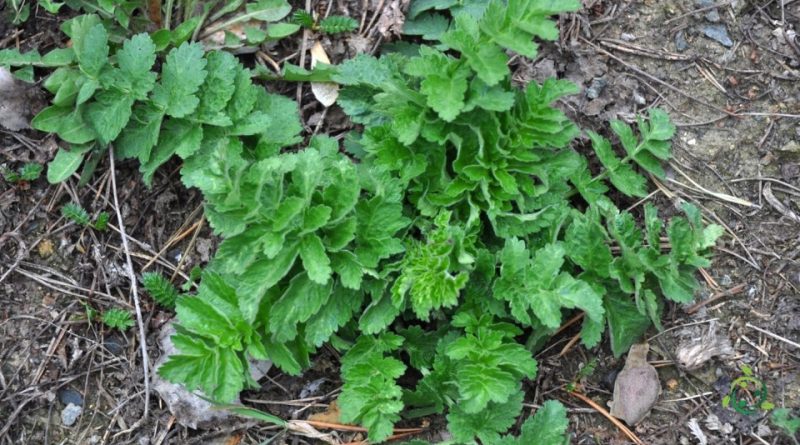Nutritional value of Parsnips
Nutritional value of Parsnips
The parsnip (Pastinaca sativa L.) is a biennial plant, cultivated as an annual, of the Apiaceae family whose root, white and fleshy, with a sour taste, is consumed as a vegetable after cooking.
Characteristics –
The parsnip originated in Europe and has been cultivated for centuries as a food and aromatic plant. Its root, similar to a carrot, is the most commonly used part and is known for its sweet and slightly aromatic taste.
The parsnip looks similar to the carrot, but with some differences. The plant has a long, slender main root, which can range in color from off-white to beige, with a wrinkled surface. The leaves are pinnate and dark green, similar to those of parsley or celery. In the second growing season, the plant develops an erect stem bearing inflorescences of small white flowers gathered in umbels, typical of Apiaceae.
Parsnip is grown as a biennial plant, meaning it completes its growth cycle in two years. In the year of sowing, the plant mainly produces roots, while in the second year it develops the stem with flowers and therefore produces seeds. It is mainly grown for its edible root, but its leaves can also be used as an aromatic herb in cooking.
Parsnip root has a sweet and mildly aromatic flavor, with a denser texture than carrots. It is often used in cooking to make soups, stews, mashed vegetables and as an additional ingredient in roasted dishes. The leaves can be used to flavor dishes or as a garnish.
Parsnips were a very popular vegetable in ancient Rome and Greece, but were gradually replaced by carrots over time, probably due to their greater sweetness. However, the parsnip has been experiencing something of a culinary renaissance in more recent times, as many people are rediscovering its unique flavor and nutritional benefits.
Nutritional card –
Parsnip is a root vegetable similar to carrot, but lighter in color and with a slightly sweeter, more aromatic flavor. It is often used in the kitchen to prepare soups, purees and roast dishes. Here is an average nutritional card for 100 grams of raw parsnip, considering that these values can change according to the cultivation method and the area where it is grown:
– Calories: 58 kcal
– Carbohydrates: 13.55 g
– Sugars: 4.8 g
– Fibers: 4.9g
– Fat: 0.3 g
– Proteins: 1.2 g
– Water: About 79g
Parsnips are also a good source of various nutrients and vitamins, including:
– Vitamin C: 17 mg (28% of the Recommended Daily Intake)
– Vitamin K: 32.5 µg (41% of the Recommended Daily Intake)
– Folate (Vitamin B9): 67 µg (17% of the Recommended Daily Intake)
– Vitamin E: 0.37 mg (2% of the Recommended Daily Intake)
– Potassium: 375 mg
– Magnesium: 29 mg
– Phosphorus: 71 mg
Parsnips are also a source of other nutrients such as calcium, iron, zinc and B vitamins. Exact amounts can vary based on factors such as the size of the root and the soil in which it was grown.
Property –
Parsnip properties include nutritional aspects, culinary uses, and potential health benefits.
Parsnip is a vegetable rich in nutrients, including fiber, vitamin C, vitamin K, vitamin E, potassium and folate. It also contains small amounts of other nutrients such as calcium, iron and magnesium.
Parsnips are a good source of dietary fiber, which can promote bowel regularity and contribute to digestive health.
It contains antioxidants such as vitamin C and vitamin E, which can help fight oxidative stress in the body and play a role in protecting cells from damage.
The high potassium and fiber content in parsnips may contribute to blood pressure regulation and overall heart health.
The presence of fiber in parsnips can help moderate blood sugar absorption, potentially supporting glucose control in diabetic patients.
The vitamin C found in parsnips plays an important role in supporting the immune system, helping to defend the body against infection and disease.
Vitamin K is important for blood clotting and bone health.
Parsnips can be cooked and eaten in ways similar to carrots. They can be peeled, diced and added to soups, stews or roasted in the oven. They can also be used as an ingredient in mashed potatoes to add flavor and a touch of sweetness.
Some people may be sensitive to parsnips and develop allergic reactions. If you experience symptoms such as itching, swelling or rashes after consuming parsnips, it is advisable to consult a doctor.

